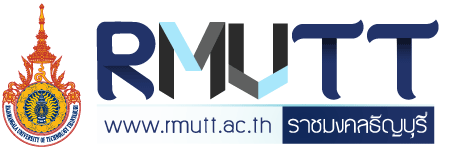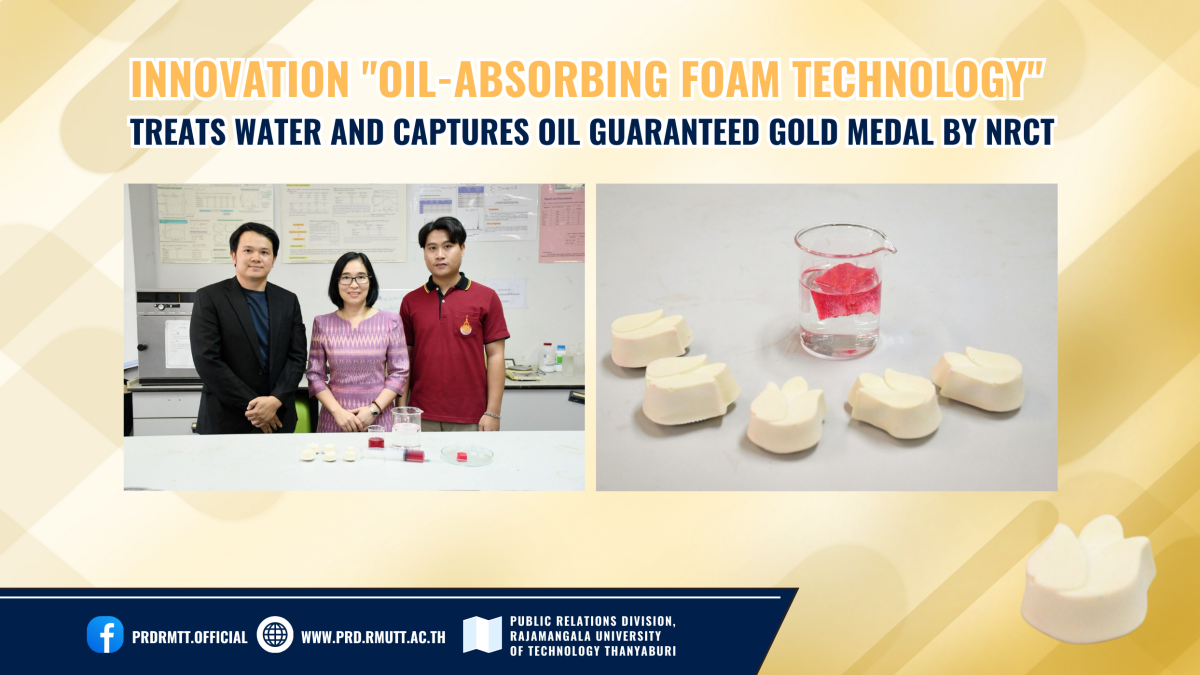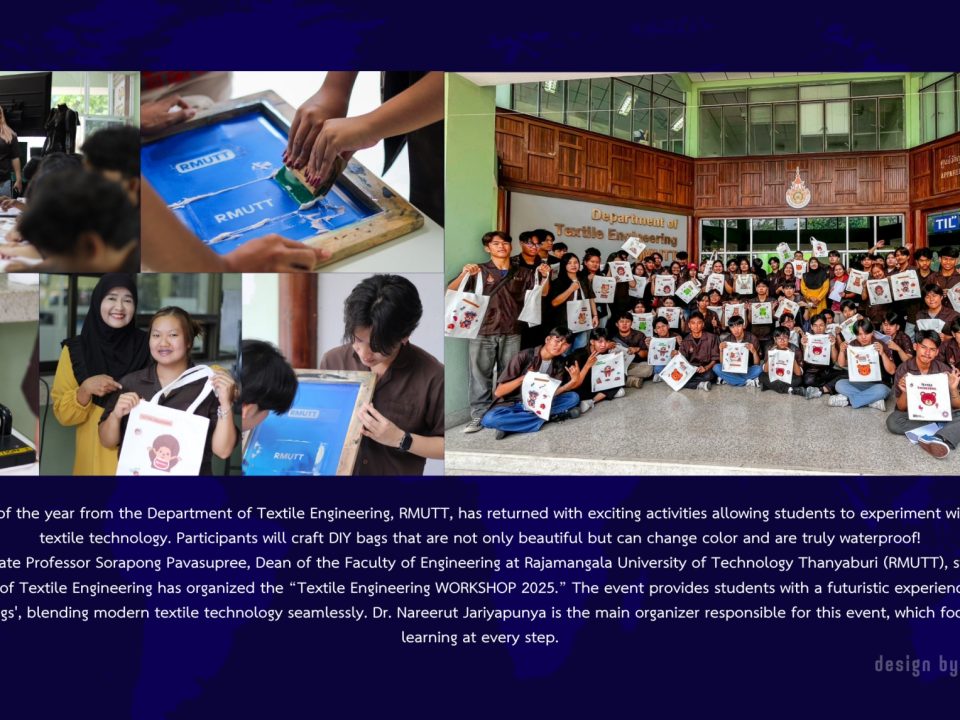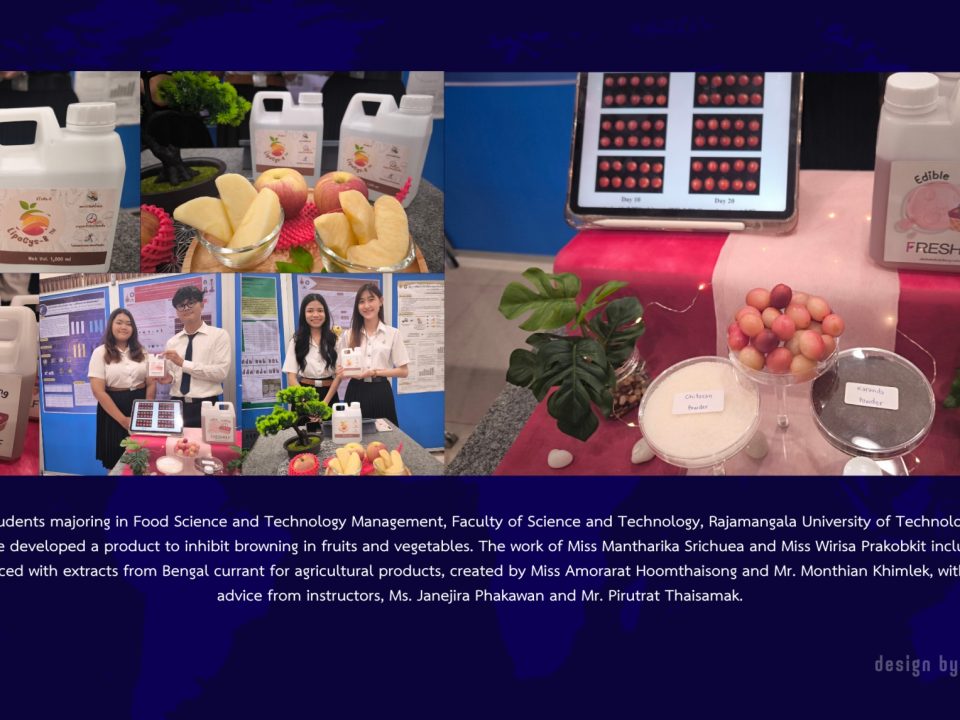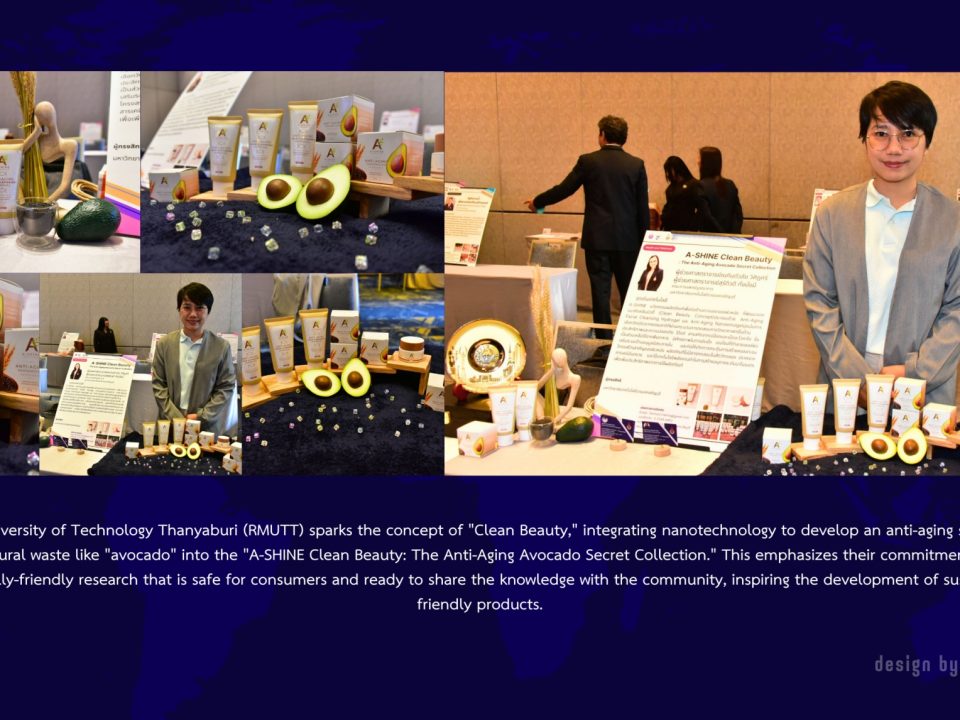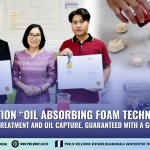
Innovation “Oil Absorbing Foam Technology” for Water Treatment and Oil Capture, Guaranteed with a Gold Medal from NRCT.
29/03/2024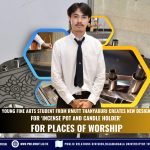
Young Fine Arts Student from RMUTT Thanyaburi Creates New Design for ‘Incense Pot and Candle Holder’ for Places of Worship
01/04/2024The innovation “Oil-Absorbing Foam Technology,” made from rubber and water hyacinth, treats water and captures oil, and is guaranteed a gold medal by the NRCT. Two students from the Faculty of Engineering at RMUTT have developed the “Oil-Absorbing Foam Technology” from rubber latex and water hyacinth. This innovation, emphasizing agricultural technology for water treatment, features a standout “rubber foam that exclusively captures oil and can be reused up to 50 times, with the captured oil being reusable.” This innovation has been awarded the Gold Medal by the National Research Council of Thailand (NRCT).
Phopthorn Klaikhem (Nate), a master’s student in the Department of Materials and Metallurgical Engineering, and Phuritpong Phanthamonasopha (Den), a doctoral student in the Faculty of Engineering at Rajamangala University of Technology Thanyaburi (RMUTT), have developed the “Green Oil-Absorbing Technology.” They were supervised by Assistant Professor Dr. Warunee Ariyawiriyananda from RMUTT and Professor Dr. Sanong Eksith from Chulalongkorn University. Recently, they received the Gold Award in the higher education category for energy, materials, and biochemistry from the national invention and innovation competition – Thailand New Gen Innovators Award 2024 (I-New Gen Awards 2024) hosted by the NRCT, Ministry of Higher Education, Science, Research and Innovation (MHESI) at the Inventor’s Day 2024 event held at BITEC.
Mr. Phopthorn Klaikhem stated that the innovation ‘Oil-Absorbing Foam Technology’ originated from awareness of environmental issues, especially oil spills into the sea and on beaches, which have both immediate and long-term impacts on humans, marine and terrestrial life, the environment, and ecosystems. The research and development of technology for oil absorption are thus crucial and highly interesting. Hence, they sought out available materials to address this problem. Mr. Phopthorn teamed up with a senior from the Faculty of Engineering, who was interested in materials and biochemistry. The senior had researched the extraction of nanocellulose crystals from water hyacinth. After seeking advice, they collaborated to develop and produce oil-absorbing foam using water hyacinth and rubber.
Mr. Phuritpong Phanthamonasopha further explained the production process of Oil-Absorbing Foam Technology. The process begins with drying the water hyacinth by sun-drying or baking it, then grinding it into smaller fibers. The fibers are then bleached to obtain a white substance. The next step is to grind it into a fine powder and extract it into nanocellulose crystals, which are then mixed with pure rubber latex to form rubber foam. They also studied the oil absorption efficiency and reusability, testing the foam with various oil types.
“The key feature of this innovation is that when water and oil are mixed, the foam selectively captures the oil. The foam can be reused over 40-50 times after squeezing out the oil. Additionally, the captured oil can be reused. Moreover, the developed rubber foam is lightweight, low-cost, easy to transport, and can be molded into various shapes to suit different areas. This innovation addresses multiple issues: reducing the problem of water hyacinth weed and promoting the widespread use of rubber when commercialized,” explained the innovator.
Assistant Professor Dr. Warunee Ariyawiriyananda, a graduate advisor in the Materials Engineering program, added that the Faculty of Engineering focuses on research that can be published in international databases. The program also encourages students to take an interest in innovation, inspired by senior students in the lab, and promotes participation in national and international competitions, with a focus on practical applications. This led to the technology being recognized for addressing various issues, particularly energy, materials, and biochemistry. The next steps involve scaling up and field testing, alongside further development of its properties, to innovate for improving water quality. For more information, call 02 549 3400. View more photos at:
